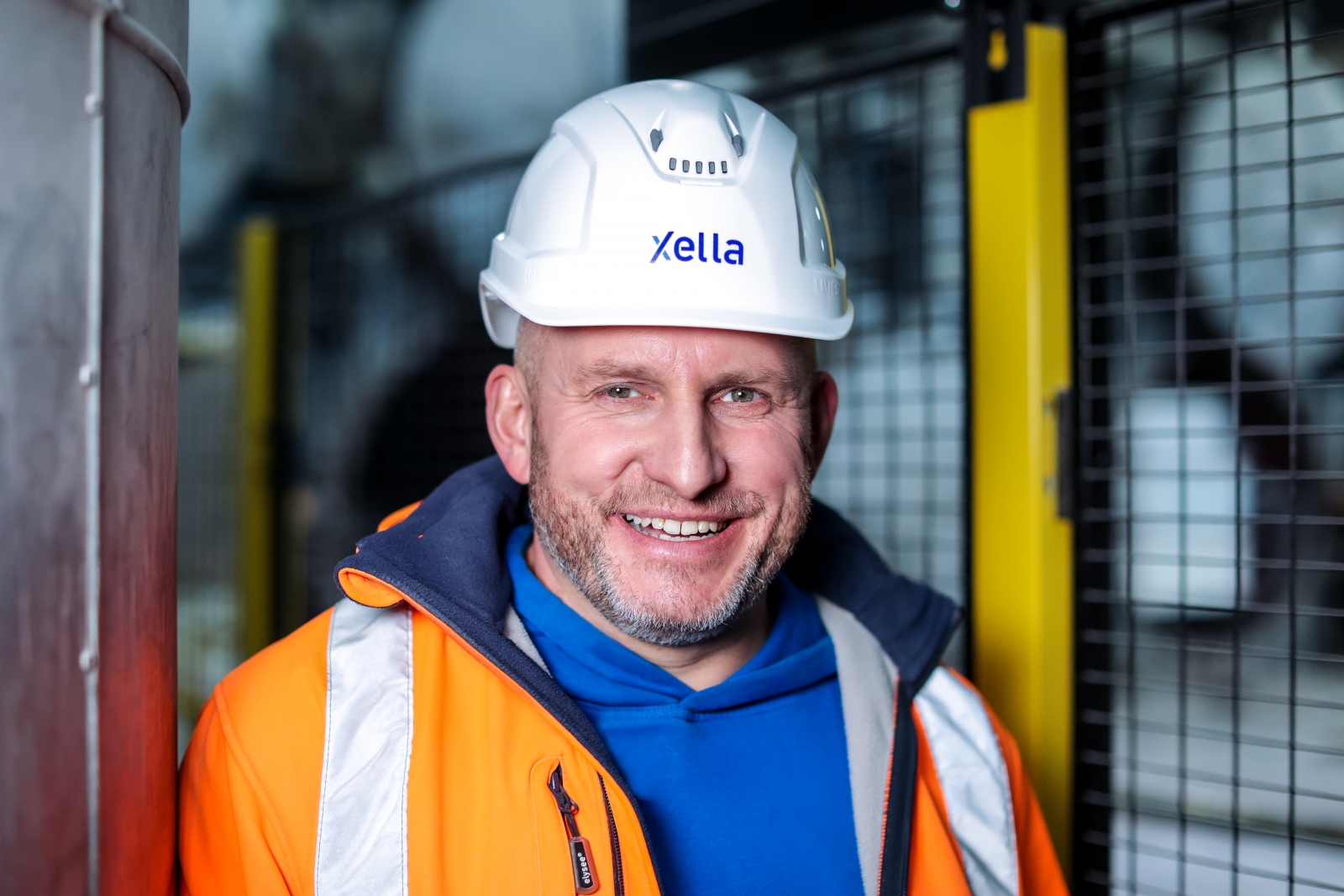When did you join Xella and what are your responsibilities?
I joined Xella in January 2018 as plant manager for granulate production in Rotenburg. After five years in this position, I took over the technical management and project management of Xella Germany's granules for a year and a half. Since the beginning of this year, I have been responsible for the entire management of granulate production in Germany. My tasks include managing production, ensuring the supply of raw materials for our granulate plants and the further development of our granulate products.
What does a typical working day look like?
It can be very different. Safety walks are an important part of my work at the plant. I am also in close contact with the plant managers who supply us with production leftovers. Cooperation with Xella's technology and research company is also very important. The focus here is on quality assurance and further developing the potential uses of our products. I also travel frequently on business to support our sites throughout Germany.
How many granulate plants does Xella have in Germany?
We currently operate four granulate plants in Germany with a total of five production lines. Most of our AAC plants also have a crushing plant for the production of raw granulate, which is then delivered to the granulate plants.
What role does sustainability play in granulate production?
Granulate production at Xella originated from an essentially sustainable idea, even before sustainability was a generally anchored topic in society: we want to utilize everything we produce. In Germany, we dispose few quantities of AAC production leftovers; we are focusing our efforts to reuse them for other purpose or reintroduce them in our recipes. Sustainability plays a central role in my work; the entire granulate business is based on this principle.
Can you describe the granulate production process in more detail? What steps are necessary to manufacture new products from production waste?We currently produce our granulate from production residues from AAC production. The leftovers are first processed into raw granulate using large crushers. In further steps, the granulate is sieved, dried and packaged. The resulting AAC chippings are fed back into production. There are then several possible uses. Our main product is cat litter, followed by an insulating fill for interior construction and technical granulates that are used for various applications, such as oil and chemical binders.
How has production changed? Are there any new trends?
The market for granules is very stable, as is the demand for our current products. Pets are becoming more and more popular, and in times when it is difficult to build new houses, a lot of old living space is being renovated. This is where our insulating fill is used for interior finishing.
Over the years, we have not only developed new products, but also optimized the ratio in which AAC residues are returned to production as chippings and further processed as granulate. This is done in order to achieve the best possible result both economically and ecologically.
We are currently working on various processes to further develop our granulate products, particularly with regard to their potential uses in the construction sector. We are in the test phase for a number of new granulate products, including applications in insulation materials and other products.
What are the challenges in granulate production and how do you and your team deal with them?
The biggest challenge is to meet the high demands of our customers in the food retail sector. The granulate plants where cat litter is produced must regularly undergo demanding audits. As the product is sold together with food, it must meet the same high HACCP requirements.
To meet these challenges, we rely on continuous quality controls and close cooperation with our customers. My team and I are constantly working to improve our processes and meet the high standards. This includes regular training, audits and the implementation of best practices in production.
What do you do when you're not at work?
In my free time, I enjoy spending time with my wife and children. I particularly enjoy being in nature, whether it's camping or hiking. I also find crafting a good balance to work.

